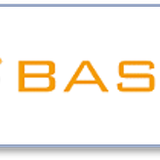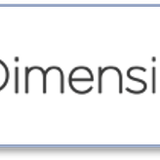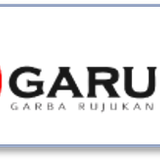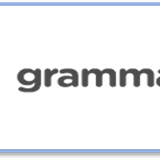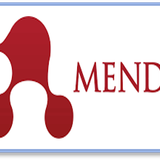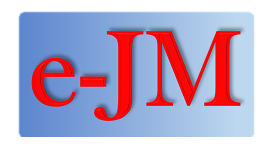Resilience To Negative Electronic Word Of Mouth: The Role Of Self-Congruity, Brand Attachment, And Prestige
DOI:
https://doi.org/10.24912/jm.v26i2.927Abstract
This study aims to: (1) introduce the concept of resilience to negative electronic word of mouth (eWOM); and (2) examine a process model from self-congruity, brand attachment, brand prestige, and resilience to negative eWOM using a moderation mediation model. A time-lag approach was conducted to collect data, involving 312 students from two universities in Jakarta. Moderation hierarchical regression using a macro process is used to test the hypothesis. The results show that resilience to negative eWOM can be strengthened through personal resources (self-congruity, brand attachment, and brand prestige). The brand attachment has been proven to be a vital factor that can strengthen resilience to negative eWOM, and this relationship becomes more robust as perceived brand prestige at a high level. These findings extend existing topics related to eWOM by presenting another form of consumer loyalty and trust in a brand through resilience to negative eWOM.
References
Aboulnasr, K., & Tran, G. A. (2020). Is love really blind? The effect of emotional brand attachment on the perceived risk of really new products. Journal of Product & Brand Management, 29(1), 81–96. https://doi.org/10.1108/JPBM-09-2018-2005
Abubakar, A. M., Ilkan, M., Meshall Al-Tal, R., & Eluwole, K. . (2017). eWOM, revisit intention, destination trust and gender. Journal of Hospitality and Tourism Management, 31, 220–227. https://doi.org/https://doi.org/10.1016/j.jhtm.2016.12.005
Ahn, J., & Back, K.-J. (2018). Antecedents and consequences of customer brand engagement in integrated resorts. International Journal of Hospitality Management, 75, 144–152. https://doi.org/https://doi.org/10.1016/j.ijhm.2018.05.020
Bachleda, C., & Berrada-Fathi, B. (2016). Is negative eWOM more influential than negative pWOM? Journal of Service Theory and Practice, 26(1), 109–132. https://doi.org/10.1108/JSTP-11-2014-0254
Baek, T. H., Kim, J., & Yu, J. H. (2010). The differential roles of brand credibility and brand prestige in consumer brand choice. Psychology & Marketing, 27(7), 662–678. https://doi.org/https://doi.org/10.1002/mar.20350
Bhatnagar, S. B. (2021). Why Are Some Customers More Loyal Than Others? The Impact of Positive Psychological Capital on Loyalty, Satisfaction, and Trust. Journal of Promotion Management, 1–41. https://doi.org/10.1080/10496491.2021.2009610
Boo, S., & Kim, J. (2013). Comparison of Negative eWOM Intention: An Exploratory Study. Journal of Quality Assurance in Hospitality & Tourism, 14(1), 24–48. https://doi.org/10.1080/1528008X.2013.749381
Bossel, V., Geyskens, K., & Goukens, C. (2019). Facing a trend of brand logo simplicity: The impact of brand logo design on consumption. Food Quality and Preference, 71, 129–135. https://doi.org/https://doi.org/10.1016/j.foodqual.2018.06.009
Bulut, Z. A., & Karabulut, A. N. (2018). Examining the role of two aspects of eWOM in online repurchase intention: An integrated trust–loyalty perspective. Journal of Consumer Behaviour, 17(4), 407–417. https://doi.org/https://doi.org/10.1002/cb.1721
Carnevale, J. B., Huang, L., & Paterson, T. (2019). LMX-differentiation strengthens the prosocial consequences of leader humility: An identification and social exchange perspective. Journal of Business Research, 96, 287–296. https://doi.org/https://doi.org/10.1016/j.jbusres.2018.11.048
Elbedweihy, A. M., Jayawardhena, C., Elsharnouby, M. H., & Elsharnouby, T. H. (2016). Customer relationship building: The role of brand attractiveness and consumer–brand identification. Journal of Business Research, 69(8), 2901–2910. https://doi.org/https://doi.org/10.1016/j.jbusres.2015.12.059
Evertz, L., Kollitz, R., & Süß, S. (2021). Electronic word-of-mouth via employer review sites – the effects on organizational attraction. The International Journal of Human Resource Management, 32(16), 3428–3457. https://doi.org/10.1080/09585192.2019.1640268
Gomez-Suarez, M., & Mónica, V. (2020). Brand experience and brand attachment as drivers of WOM in hospitality. Spanish Journal of Marketing - ESIC, 24(2), 231–246. https://doi.org/10.1108/SJME-12-2019-0106
Hair, J., Black, W., Babin, B., & Anderson, R. (2010). Multivariate Data Analysis (7th ed.). Prentice Hall, Upper Saddle River, NJ.
Hu, Y., & Kim, H. J. (2018). Positive and negative eWOM motivations and hotel customers’ eWOM behavior: Does personality matter? International Journal of Hospitality Management, 75, 27–37. https://doi.org/https://doi.org/10.1016/j.ijhm.2018.03.004
Japutra, A., Ekinci, Y., & Simkin, L. (2019). Self-congruence, brand attachment and compulsive buying. Journal of Business Research, 99, 456–463. https://doi.org/https://doi.org/10.1016/j.jbusres.2017.08.024
Ji, C., Zeng, Z., & Kale, S. H. (2018). The antecedents of tourists’ gaming spend: does the brand prestige matter? Asia Pacific Journal of Tourism Research, 23(11), 1086–1097. https://doi.org/10.1080/10941665.2018.1524775
Jimenez, F. R., & Voss, K. E. (2014). An Alternative Approach to the Measurement of Emotional Attachment. Psychology & Marketing, 31(5), 360–370. https://doi.org/https://doi.org/10.1002/mar.20700
Kim, S., Ham, S., Moon, H., Chua, B.-L., & Han, H. (2019). Experience, brand prestige, perceived value (functional, hedonic, social, and financial), and loyalty among GROCERANT customers. International Journal of Hospitality Management, 77, 169–177. https://doi.org/https://doi.org/10.1016/j.ijhm.2018.06.026
Kock, N. (2017). Common Method Bias: A Full Collinearity Assessment Method for PLS-SEM BT - Partial Least Squares Path Modeling: Basic Concepts, Methodological Issues and Applications (H. Latan & R. Noonan (eds.); pp. 245–257). Springer International Publishing. https://doi.org/10.1007/978-3-319-64069-3_11
Lee, J., & Jensen, J. M. (2014). The Effects of Active Constructive and Passive Corrective Leadership on Workplace Incivility and the Mediating Role of Fairness Perceptions. Group & Organization Management, 39(4), 416–443. https://doi.org/10.1177/1059601114543182
Li, M.-W., Teng, H.-Y., & Chen, C.-Y. (2020). Unlocking the customer engagement-brand loyalty relationship in tourism social media: The roles of brand attachment and customer trust. Journal of Hospitality and Tourism Management, 44, 184–192. https://doi.org/https://doi.org/10.1016/j.jhtm.2020.06.015
Li, Y., Lu, C., Bogicevic, V., & Bujisic, M. (2019). The effect of nostalgia on hotel brand attachment. International Journal of Contemporary Hospitality Management, 31(2), 691–717. https://doi.org/10.1108/IJCHM-12-2017-0797
Luthans, F., & Youssef-Morgan, C. M. (2017). Psychological Capital: An Evidence-Based Positive Approach. Annual Review of Organizational Psychology and Organizational Behavior, 4(1), 339–366. https://doi.org/10.1146/annurev-orgpsych-032516-113324
Moran, G., & Muzellec, L. (2017). eWOM credibility on social networking sites: A framework. Journal of Marketing Communications, 23(2), 149–161. https://doi.org/10.1080/13527266.2014.969756
Nischay K. U, Bhakar, S., & Chauhan, A. S. (2015). The Effect of Brand Prestige on Brand Preference and Word of Mouth: The Moderator Role of Customer Involvement. Asian Journal of Research in Marketing, 4(2), 123–140.
Park, C. . ., Macinnis, D. J., Priester, J., Eisingerich, A. B., & Iacobucci, D. (2010). Brand Attachment and Brand Attitude Strength: Conceptual and Empirical Differentiation of Two Critical Brand Equity Drivers. Journal of Marketing, 74(6), 1–17. https://doi.org/10.1509/jmkg.74.6.1
Podsakoff, P. M., MacKenzie, S. B., & Podsakoff, N. P. (2012). Sources of Method Bias in Social Science Research and Recommendations on How to Control It. Annual Review of Psychology, 63(1), 539–569. https://doi.org/10.1146/annurev-psych-120710-100452
Prasad, S., Garg, A., & Prasad, S. (2019). Purchase decision of generation Y in an online environment. Marketing Intelligence & Planning, 37(4), 372–385. https://doi.org/10.1108/MIP-02-2018-0070
Rabbanee, F. K., Roy, R., & Spence, M. T. (2020). Factors affecting consumer engagement on online social networks: self-congruity, brand attachment, and self-extension tendency. European Journal of Marketing, 54(6), 1407–1431. https://doi.org/10.1108/EJM-03-2018-0221
Roy, R., & Rabbanee, F. K. (2015). Antecedents and consequences of self-congruity. European Journal of Marketing, 49(3/4), 444–466. https://doi.org/10.1108/EJM-12-2013-0739
Saad, N. A., Elgazzar, S., & Kac, S. M. (2022). Investigating the Impact of Resilience , Responsiveness , and Quality on Customer Loyalty of MSMEs : Empirical Evidence. Sustainability (Switzerland), 14, 5011. https://doi.org/https://doi.org/10.3390/su14095011
Šegota, T., Chen, N. (Chris), & Golja, T. (2021). The Impact of Self-Congruity and Evaluation of the Place on WOM: Perspectives of Tourism Destination Residents. Journal of Travel Research, 61(4), 800–817. https://doi.org/10.1177/00472875211008237
Sirgy, M. J. (2018). Self-congruity theory in consumer behavior: A little history. Journal of Global Scholars of Marketing Science, 28(2), 197–207. https://doi.org/10.1080/21639159.2018.1436981
Srivastava, M., & Sivaramakrishnan, S. (2021). The impact of eWOM on consumer brand engagement. Marketing Intelligence & Planning, 39(3), 469–484. https://doi.org/10.1108/MIP-06-2020-0263
Teso, E., Olmedilla, M., Martínez-Torres, M. R., & Toral, S. L. (2018). Application of text mining techniques to the analysis of discourse in eWOM communications from a gender perspective. Technological Forecasting and Social Change, 129, 131–142. https://doi.org/https://doi.org/10.1016/j.techfore.2017.12.018
Thompson, K. R., Lemmon, G., & Walter, T. J. (2015). Employee engagement and positive psychological capital. Organizational Dynamics, 44(5), 185–195. https://doi.org/https://doi.org/10.1016/j.orgdyn.2015.05.004
Verma, D., & Dewani, P. P. (2021). eWOM credibility: a comprehensive framework and literature review. Online Information Review, 45(3), 481–500. https://doi.org/10.1108/OIR-06-2020-0263
Wang, D., Walker, T., & Barabanov, S. (2020). A psychological approach to regaining consumer trust after greenwashing: the case of Chinese green consumers. Journal of Consumer Marketing, 37(6), 593–603. https://doi.org/10.1108/JCM-06-2019-3257
Downloads
Published
How to Cite
Issue
Section
License
Copyright (c) 2022 Jurnal Manajemen

This work is licensed under a Creative Commons Attribution-NonCommercial-ShareAlike 4.0 International License.
This journal provides immediate open access to its content on the principle that making research freely available to the public supports a greater global exchange of knowledge.

This work is licensed under a Creative Commons Attribution-NonCommercial-ShareAlike 4.0 International License






